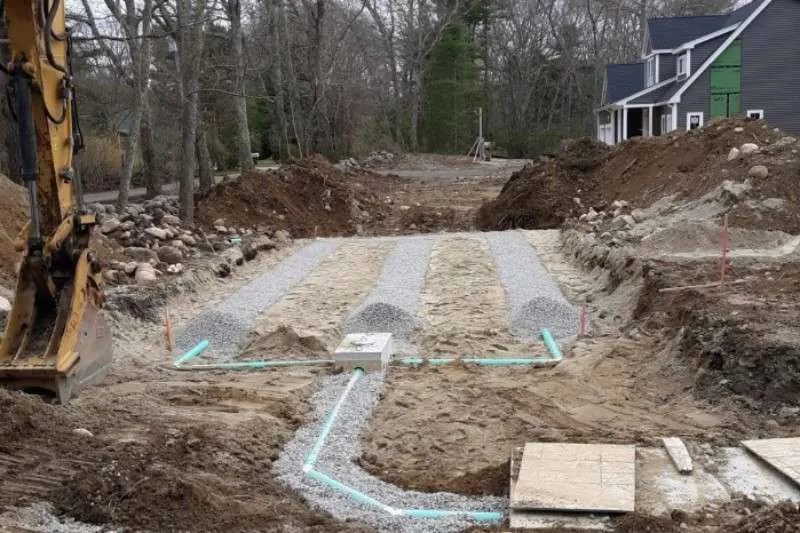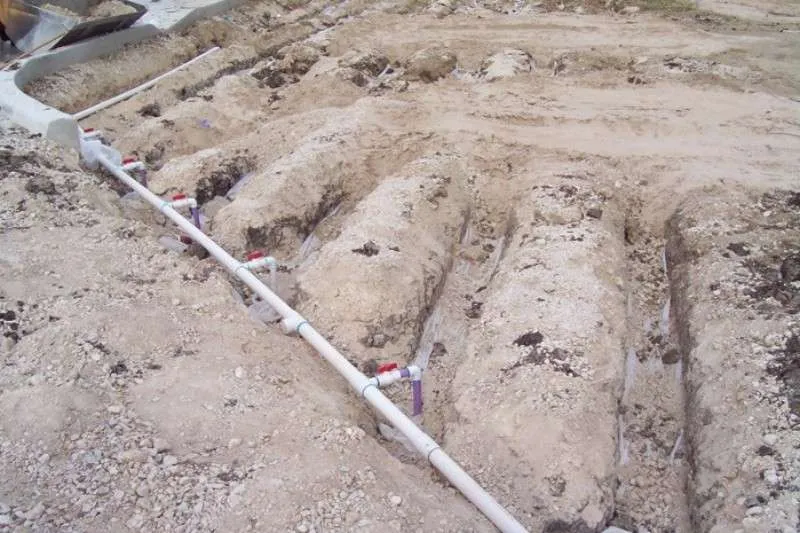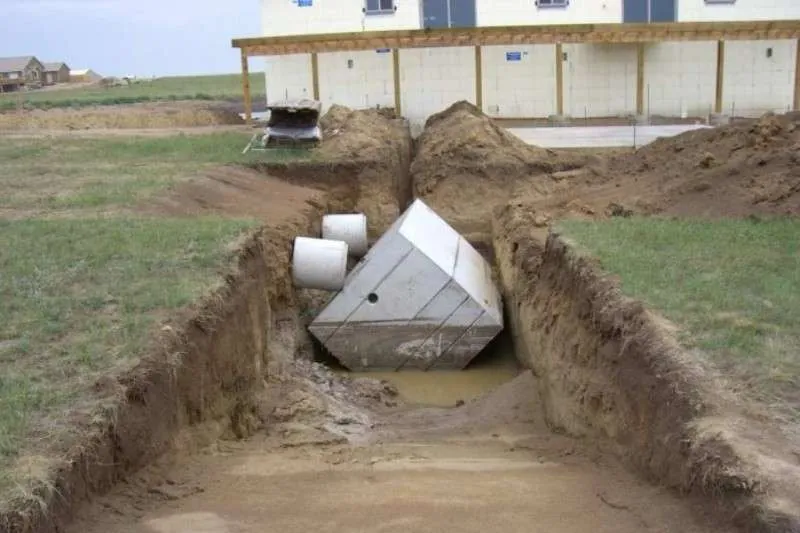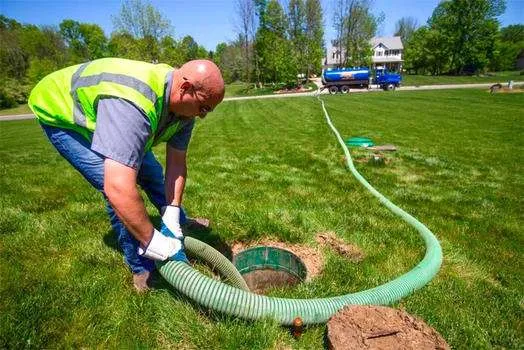Are you wondering how your home’s septic system works? A properly functioning septic system is an integral part of any residential or commercial property, and understanding its components can be beneficial for ensuring that the structure and landscape around it remain healthy.
In this blog post, we’ll provide an overview of the different components of a typical septic system, including their purpose and importance. We’ll also discuss potential problems associated with each component and ways to minimize those issues from occurring in the future.
Whether looking for basic information about these systems or researching solutions for a current problem, this post will equip you with the tools to protect your property’s functionality.
Introduction to septic system components
Septic systems are a type of on-site wastewater treatment system. They generally have four main components: the septic tank, distribution box, drain field, and soil absorption area. Each component has an important role in the safe disposal of household wastewater, and all must work properly for the entire system to function properly.
The septic tank is the first component of a septic system. It collects and stores wastewater from your home. It also serves as the primary treatment step for most systems. As the effluent flows into the tank, solids settle to form sludge while lighter materials, such as fats and oils, float to form scum at the surface. Microorganisms living in the septic tank break down these materials and use them as food, reducing their volume. After this treatment process, the partially treated wastewater flows out of the tank into a distribution box.
The drain field comprises concrete box filled with a series of trenches, typically covered with gravel, connected to laterals extending out from the box. The effluent flows through the trenches and is further purified by soil microbes, which helps to reduce contaminants. The effluent is then absorbed into the ground, where natural processes further purify it before it enters bodies of water.
The last component of a septic system is the soil absorption area, which comprises perforated pipes in gravel-filled beds. This is where the purified wastewater from the septic system is released and absorbed into the ground. The soil in this area acts as a natural filter for additional purification, preventing pollutants from entering local water sources.
Septic tank, The primary storage and treatment component of a septic system
The septic tank is a septic system’s primary storage and treatment component. It receives wastewater from the home or business, separates the solid waste or materials from liquid, and holds it until natural processes can treat it. The tank allows wastewater to enter one end and flow slowly through its chambers to the other. During this time, the wastewater is treated by a combination of natural processes that separate and break down solid materials. The liquid portion then leaves through an outlet pipe at the other end of the tank, while solids remain to be broken down further by bacteria in the tank.
Drain field (leach field)
The drain or leach fields are where se system wastewater is released into the soil. It is essential for the proper operation of a septic system that the drain field be properly designed and maintained. The effectiveness of a drain field depends on how well it disperses water without overwhelming the ground’s absorption capacity. Poor design or maintenance of gravity system can lead to wastewater pooling on the surface and causing damage to the environment.
The drain field consists of perforated pipes in trenches filled with gravel and soil. The size, shape, and depth of these trenches will vary depending on the type of system being used and the soil conditions in the area. Properly designed drain fields are usually constructed in shallow, wide trenches connected by perforated pipes.
Inlet and outlet pipes

Inlet and outlet pipes are essential in transporting wastewater from the dwelling to the septic tank and directing effluent away from the septic tank effluent itself. The size of these pipes depends on the design specifications of the septic system and should be installed properly by a qualified professional to prevent clogs and other problems that could lead to system failure.
To prevent leakage, the septic contractor should ensure pipes are sloped correctly and securely attached to the tank. The pipes should be checked periodically for cracks or holes, which can contaminate groundwater and other drinking water sources. It is also important for septic tanks to use quality materials, such as PVC, to reduce the likelihood of corrosion and leaks.
The quality of the pipes can also affect system performance. If too much water is allowed to enter the tank, it may be unable to adequately process all the effluents. This could lead to excessive nitrogen levels and other pollutants in the soil and bacterial contamination of nearby streams and rivers. On the other hand, if too little water is allowed to enter the treatment tank itself, it may not be able to adequately treat the wastewater before discharging it into the environment.
Distribution box
The distribution box is the component of a septic system responsible for evenly distributing wastewater into the drain field. It is a necessary part of any functioning system, so it’s important to inspect and maintain it regularly to ensure it continues functioning properly. The distribution box contains connecting pipes from which wastewater exits into trenches around the perimeter of the drain field.
This “drain field” is where wastewater enters the ground and is naturally filtered before it reaches groundwater. The distribution box must be installed correctly to ensure an even wastewater flow, allowing optimal effluent filtration from the system. In addition, the pipes must be properly secured within the distribution box to prevent any escape of wastewater.
It is important to note that the distribution box should be regularly inspected for leaks, clogs, or any other problems that may occur over time. This could include anything from tree root intrusion to soil shifting due to changing weather conditions. If a leak is detected, it should be addressed immediately to prevent further damage.
Checking the distribution box for proper installation and any signs of wear or corrosion should be a part of your regular maintenance routine. Properly functioning distribution boxes are key to maintaining an efficient septic system and preventing costly repairs in the future.
Septic system vent
The septic system vent is an important residential or commercial septic system component. The primary role of the vent is to allow gases, such as hydrogen sulfide and methane, to escape from the septic system without having it cause odors inside buildings and other enclosed spaces. Without proper venting, gases produced by decomposition within the septic tank and leach field can become concentrated and dangerous to occupants of the building or area. Properly placed and maintained vents are essential for ensuring safe air quality in any environment where a septic system is located.
Vent placement should be done according to guidelines established by local health departments, typically near soils that provide adequate drainage. Properly placed vents should be at least 10 feet from any building and away from windows or other openings where gases can enter a structure. Vent pipes should also be kept free of obstructions such as tree roots, which can prevent proper gas flow.
The vent opening should remain visible and accessible for maintenance purposes. If the vent pipe becomes blocked or clogged, it should be cleared immediately to avoid the build-up of gases within the septic system. Regular maintenance of the vent, such as periodic cleaning and replacement of components, is also recommended for optimal performance.
Optional septic system components

In addition to the main components of a septic system, several optional components can be used to enhance performance. Pumps and filters are two of the most common components added to a septic system. Understanding their benefits and drawbacks can help homeowners decide if additional components suit them.
Pumps provide an important function in a septic system by moving wastewater from the tank to the drainage field. This pump chamber ensures enough water pressure to move the wastewater out of the tank and evenly distribute it throughout the leaching area. Additionally, they can connect two separate tanks or increase the distance between a single tank and its drain field.
Filters also play an important role in a septic system. They help to prevent solids from entering the leaching area and clogging up the field lines. Additionally, they can reduce odor problems and improve water quality when used properly.
Other optional components that can be added to a septic system include aerators, chlorine injectors, and ultraviolet light systems. Aerators help oxygenate wastewater in the tank, improving septic system performance. Chlorine injectors add an extra treatment layer to the water by adding a measured amount of chlorine for disinfection. Ultraviolet light systems use UV rays to purify wastewater before it enters the environment.
When used properly, these components can help maintain a septic system’s performance and extend its life. However, as conventional systems, they also require maintenance and upkeep to work correctly. Additionally, it’s important to ensure the system is sized correctly for each component before installation.
FAQs
What are the main components of a septic system?
The main components of a septic system are the tank, leaching area sand filter, drain lines, and distribution boxes.
How does a septic tank function in the wastewater treatment process?
The septic tank stores wastewater from home, allowing solid matter to settle and form a sludge layer at the bottom while oil and grease float to the top. This separation process allows some solids to be broken down by bacteria in the tank before the partially treated wastewater is sent to the leaching.
What is the purpose of a drain field in a septic system?
The drain field is the final septic system wastewater treatment stage. It consists of several parallel lines or trenches filled with gravel and perforated pipes. The wastewater from the tank is slowly released into these trenches, where it trickles down through the gravel and soil, removing any remaining impurities before entering a water source such as a pond or stream.
How do inlet and outlet pipes contribute to septic system functionality?
Inlet and outlet pipes connect the septic tank to the drain field. The inlet carries wastewater from the home into the tank, while the outlet pipe partially treats wastewater from the tank in the leaching area. These pipes’ sizes and connections should be inspected regularly to ensure they are properly.
What is the role of a distribution box in a septic system?
The distribution box connects the septic tank and the drain field. It helps to evenly distribute wastewater from the tank throughout the leaching area, ensuring optimal performance. The pressure distribution box should be regularly inspected for blockages or clogs that could impede water flow.
Conclusion
Maintaining a properly functioning septic system is critical for the health of your home and family. It’s important to be aware that problems can arise with any system component, so it’s imperative to do regular checks and stay on top of required maintenance. Through this blog post, we’ve provided an overview of the components found in most septic systems departments and have explored the potential problems that may arise from each one.


